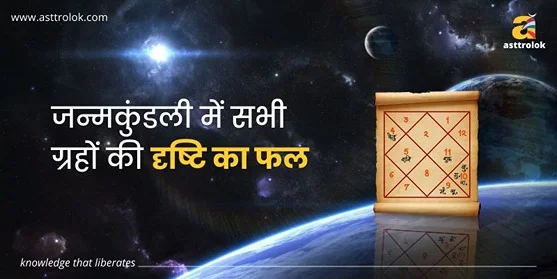
Vedic astrology, also known as Jyotish, is a profound and ancient system of astrology that has been practiced in India for thousands of years. While many are familiar with the twelve zodiac signs, another crucial component of Vedic astrology is the Nakshatras. Nakshatras are lunar constellations or star clusters that play a significant role in Vedic astrology and provide deeper insights into an individual's personality, life events, and destiny. In this blog, we will explore the importance of Nakshatras in Vedic astrology and how they enhance the understanding of our cosmic blueprint.
Learn more Secrets of Nakshatras. Get an online astrology consultation by the world-renowned astrologer Mr. Alok Khandelwal.
What Are Nakshatras?
Nakshatras, often referred to as "lunar mansions" in Vedic astrology, are 27 segments of the ecliptic (the apparent path of the Sun across the celestial sphere) that the Moon passes through during its monthly orbit around the Earth. Each Nakshatra is associated with specific stars or star clusters and has its unique characteristics, qualities, and symbolism.
Importance of Nakshatras in Vedic Astrology
1. Personalized Insights: Nakshatras provide a more personalized and nuanced understanding of an individual's birth chart (natal chart or horoscope). While the zodiac signs offer general traits and characteristics, Nakshatras refine these attributes to a finer level, offering detailed insights into one's personality, strengths, and weaknesses.
2. Life Path and Purpose: Nakshatras play a crucial role in revealing an individual's life purpose and destiny. They shed light on the karmic influences and lessons that a person is meant to encounter in their lifetime. Understanding one's Nakshatra can guide them toward fulfilling their life's mission.
3. Compatibility and Relationships: Nakshatras are essential in assessing compatibility in relationships, be it in marriage, friendships, or business partnerships. Compatibility based on Nakshatras takes into account not only the Sun signs (zodiac signs) but also the Moon signs, which are closely linked to Nakshatras.
4. Timing of Events: In predictive astrology, Nakshatras are used to determine the timing of significant life events, such as marriage, career changes, and major transitions. Specific Nakshatras are associated with specific life stages and events, allowing astrologers to make accurate predictions.
Read also: The Role of Planets in Vedic Astrology
The 27 Nakshatras
Let's briefly explore the 27 Nakshatras and their qualities:
Ashwini: The first Nakshatra represents swift action, innovation, and healing abilities.
Bharani: This Nakshatra signifies creativity, fertility, and a transformative nature. Krittika: Associated with the element of fire, it represents determination, courage, and purification.
Rohini: Known for its beauty and sensuality, Rohini is related to growth, nourishment, and artistic talents.
Mrigashira: This Nakshatra symbolizes exploration, curiosity, and a search for truth. Ardra: Associated with storms and turbulence, Ardha Nakshatra represents transformation through chaos.
Punarvasu: Signifying renewal and abundance, it's linked to home and nurturing qualities. Pushya: Known for its spiritual and nurturing qualities, Pushya is associated with devotion and compassion.
Ashlesha: Representing emotional depth and transformation, Ashlesha Nakshatra is linked to the serpent energy.
Magha: Associated with royalty and leadership, it signifies authority and legacy.
Purva Phalguni: This Nakshatra is connected to sensuality, love, and creative expression. Uttara Phalguni: Signifying responsibility and service, it's related to social justice and healing. Hasta: Linked to precision and craftsmanship, Hasta Nakshatra represents skills and dexterity. Chitra: Known for its artistic and creative energy, Chitra signifies cosmic order and balance.
Swati: This Nakshatra is associated with independence, freedom, and diplomacy. Vishakha: Representing achievement and determination, Vishakha Nakshatra symbolizes success through challenges.
Anuradha: Associated with friendship and loyalty, it signifies dedication and partnership. Jyeshtha: Known for its wisdom and power, Jyeshtha is related to leadership and authority. Mula: Signifying destruction and transformation, Mula Nakshatra represents the root of all things.
Purva Ashadha: This Nakshatra is linked to perseverance, determination, and goal achievement.
Uttara Ashadha: Associated with leadership and success, it symbolizes victory over obstacles. Shravana: Representing knowledge and learning, Shravana Nakshatra signifies spiritual growth.
Dhanishta: Known for its musical and artistic talents, Dhanishta is associated with fame and recognition.
Shatabhisha: Signifying healing and transformation, Shatabhisha Nakshatra represents deep insight.
Purva Bhadrapada: Linked to mysticism and spirituality, it signifies liberation and enlightenment.
Uttara Bhadrapada: This Nakshatra is associated with healing and compassion, symbolizing universal love.
Revati: Known for its nurturing and caring qualities, Revati Nakshatra represents the end of the cosmic journey.
Consulting a Vedic Astrologer
Interpreting Nakshatras in Vedic astrology requires expertise and an in-depth understanding of an individual's birth chart. Consulting a qualified Vedic astrologer can provide invaluable insights into the significance of Nakshatras in your life and help you navigate their influences effectively. In conclusion, Nakshatras are a vital component of Vedic astrology, offering a deeper and more nuanced understanding of our cosmic blueprint. They provide personalized insights into our personalities, life paths, and destinies, guiding us toward self-discovery and fulfilling our life's purpose.
Read also: Dussehra: Celebrating Good's Triumph Over Evil
Comments (0)
Categories
Recent posts


जन्मकुंडली में ...
30 Aug 2023
Importance of Bhakoot Koota in Kundali ...
30 Aug 2023

.webp)














